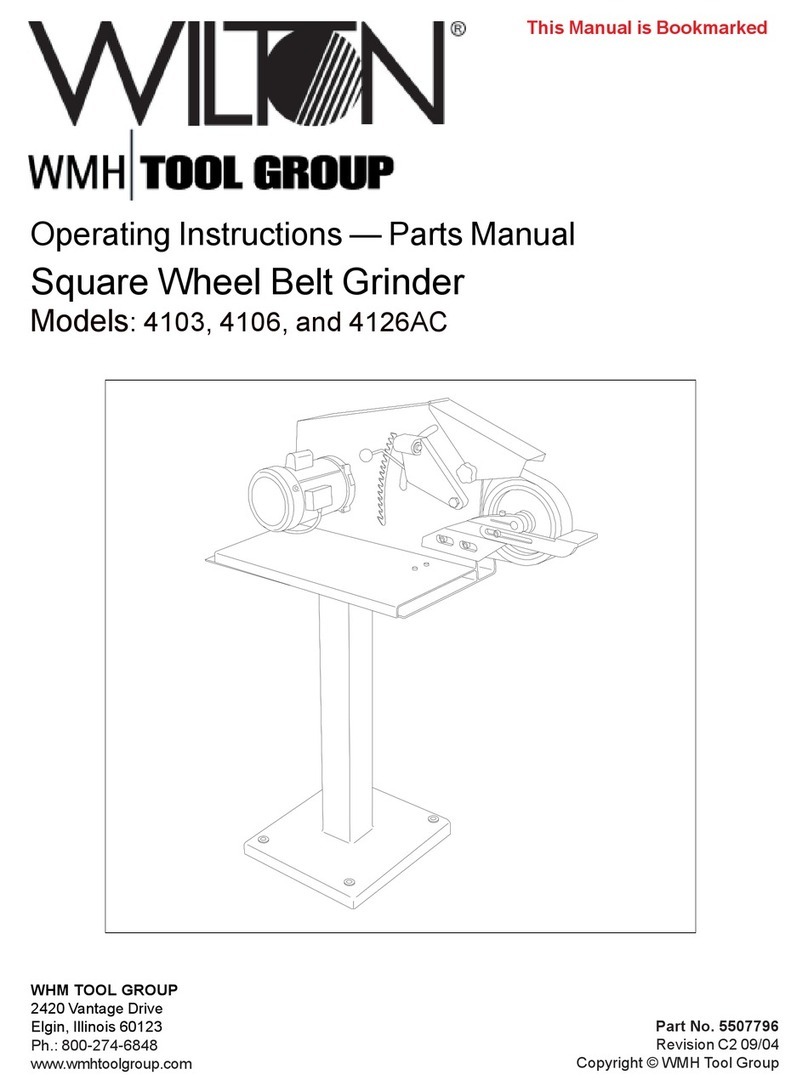
6
A B C D
17. Keep hands in sight and clear of all moving parts
and cutting surfaces.
18. All visitors should be kept at a safe distance
from the work area. Make workshop completely
safe by using padlocks, master switches, or by
removing starter keys.
19. Know the tool you are using—its application,
limitations, and potential hazards.
General Electrical Cautions
This machine should be grounded in accordance with
the National Electrical Code and local codes and
ordinances. This work should be done by a qualified
electrician. The machine should be grounded to
protect the user from electrical shock.
Wire sizes
Caution: for circuits which are far away from the
electrical service box, the wire size must be in-
creased in order to deliver ample voltage to the
motor. To minimize power losses and to prevent
motor overheating and burnout, the use of wire sizes
for branch circuits or electrical extension cords
according to the following table is recommended:
AWG (American wire gauge) Number
Conductor Length 240 Volt Lines 120 Volt Lines
0 - 50 Feet No. 14 No. 14
50 - 100 Feet No. 14 No. 12
Over 100 Feet No. 14 No. 8
Abrasive grinding can be hazardous to operators and
bystanders. Grinding sparks, chips and dust par-
ticles thrown off by the grinding disc can cause
serious injury by contact or inhalation. To avoid
such injuries you must comply with the following
safety requirements:
1. Always wear protective eyewear when operating
machinery. Eye wear shall be impact resistant,
protective safety glasses with side shields which
comply with ANSI Z87.1. Use of eye wear which
does not comply with ANSI Z87.1 specifications
could result in severe injury from breakage of
eye protection. See Figure A, below.
2. Wear leather safety gloves, arm guards, leather
aprons and safety shoes.
3. A dust collection system is recommended,
Operator shall also wear a dust mask at all
times. See Figure B, below.
4. Additional precautions may be necessary for
grinding materials which are flammable or have
other hazardous properties. You should always
consult the manufacturer of such materials for
instructions on grinding and handling.
5. Do not force or jamb the workpiece into the
grinding disc.
6. Before grinding, always allow the motor to come
up to operating speed, then check the grinding
disc for wobble, runout, or any unbalanced
Safety requirements for abrasive grinding machines
condition. If the disc is not operating accurately
and smoothly, immediately stop the motor and
make repairs before attempting any grinding
operations.
7. Abrasive discs must be stored in a controlled
environment area. Relative humidity should be
35% to 50% and the temperature should be
between 60 and 80 degrees Fahrenheit. Failure
to do so could cause premature disc failure.
8. Examine the face of the grinding disc carefully.
Excessive grinding which wears down to the
backing material can tear the disc. Never use a
disc which shows backing, nicks or cuts on the
surface or edge or damage due to creasing or
poor handling.
9. When installing a new disc, be certain the disc is
accurately centered on the drive wheel. Failure
to do so could cause a serious unbalanced
condition.
10. Always present the workpiece to the wheel while
resting the workpiece firmly on the table. Failure
to do so could result in damage to the workpiece
or throwing of the workpiece off the wheel.
11. Safety shoes which comply with ANSI Z41.1 shall
be worn. See Figure C.
12. Personal hearing protection such as ear plugs or
ear muffs shall be used to protect against the
effect of noise exposure. See Figure D:





























